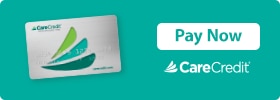Spinal Stenosis
![]() Are you seeking effective spinal stenosis treatment in the Mountain View area? A narrowing of the open spaces of the spine normally occupied by nerves, spinal stenosis is a condition that can occur along any point of the backbone. It can result in some degree of discomfort if the narrowing places pressure on your spine and adjacent nerves, with pain sometimes traveling to the arms and legs. Often occurring in the lower back or neck, spinal stenosis can result in no symptoms at all or debilitating back and/or neck pain. Treatment will depend on what you’re experiencing as a result of the condition.
Are you seeking effective spinal stenosis treatment in the Mountain View area? A narrowing of the open spaces of the spine normally occupied by nerves, spinal stenosis is a condition that can occur along any point of the backbone. It can result in some degree of discomfort if the narrowing places pressure on your spine and adjacent nerves, with pain sometimes traveling to the arms and legs. Often occurring in the lower back or neck, spinal stenosis can result in no symptoms at all or debilitating back and/or neck pain. Treatment will depend on what you’re experiencing as a result of the condition.
Causes
The most common cause of spinal stenosis is changes in the spine due to conditions like osteoarthritis, a chronic “wear and tear” form of arthritis that frequently affects spine joints. In most cases, something happens to cause the spinal canal to narrow. Some type of gradual degeneration, for instance, can result in the formation of bone spurs that can press on nerves. Paget’s disease, an adult bone condition, may also result in bone overgrowth somewhere along the spine. Spinal stenosis may also be caused by:
- Herniated discs
- Thickened ligaments
- Spinal injuries
- Spinal tumors
Symptoms
There may be evidence of spinal stenosis from x-rays or image testing even without any discomfort. When there is pain associated with spinal stenosis, symptoms are often gradual and worsen over time. Ranging from occasional pain that comes and goes to persistent pain, numbness, or weakness, symptoms can vary in severity depending on the part of the spine that’s affected by the condition. If the stenosis is the cervical spine, compression of nerves in the neck may result in radiating pain that’s felt in the shoulders or as far down as the hands and fingers. Symptoms associated with spinal stenosis may include:
- Leg pain or cramping
- Increased discomfort when sitting or standing for long periods of time
- Pain that eases when changing positions or bending forward
- Tingling in hands, arms, legs, or feet
- Issues with walking or maintaining balance
Treatments
![]() Mountain View spinal stenosis treatment often includes some form of physical therapy. Exercises are meant to prevent deterioration of supporting muscles. Since pain is often associated with certain movements and positions, activity modifications can sometimes help ease the severity of your discomfort. Non-operative remedies for spinal stenosis are often diverse enough to achieve successful pain management for many patients. Anti-inflammatory medications can also alleviate symptoms. There’s a growing trend towards minimizing the use of narcotic pain medications. When such medications are necessary, use should be short-term only. Additional treatment options include:
Mountain View spinal stenosis treatment often includes some form of physical therapy. Exercises are meant to prevent deterioration of supporting muscles. Since pain is often associated with certain movements and positions, activity modifications can sometimes help ease the severity of your discomfort. Non-operative remedies for spinal stenosis are often diverse enough to achieve successful pain management for many patients. Anti-inflammatory medications can also alleviate symptoms. There’s a growing trend towards minimizing the use of narcotic pain medications. When such medications are necessary, use should be short-term only. Additional treatment options include:
- Epidural steroid injections and nerve blocks
- Percutaneous electrical nerve stimulation (PENS)
- Chiropractic adjustments
- Muscle relaxants
Unless it’s present at birth, spinal stenosis is typically progressive in nature. You may go years without experiencing any issues with the condition. Once you start to experience some level of back or neck pain, however, it’s time to consider your available treatment options. While surgery is sometimes necessary, the good news is that there are many non-surgical treatment options that may successfully manage your pain.
Contact Allied Pain & Spine Institute in Mountain View today to schedule your consultation.

